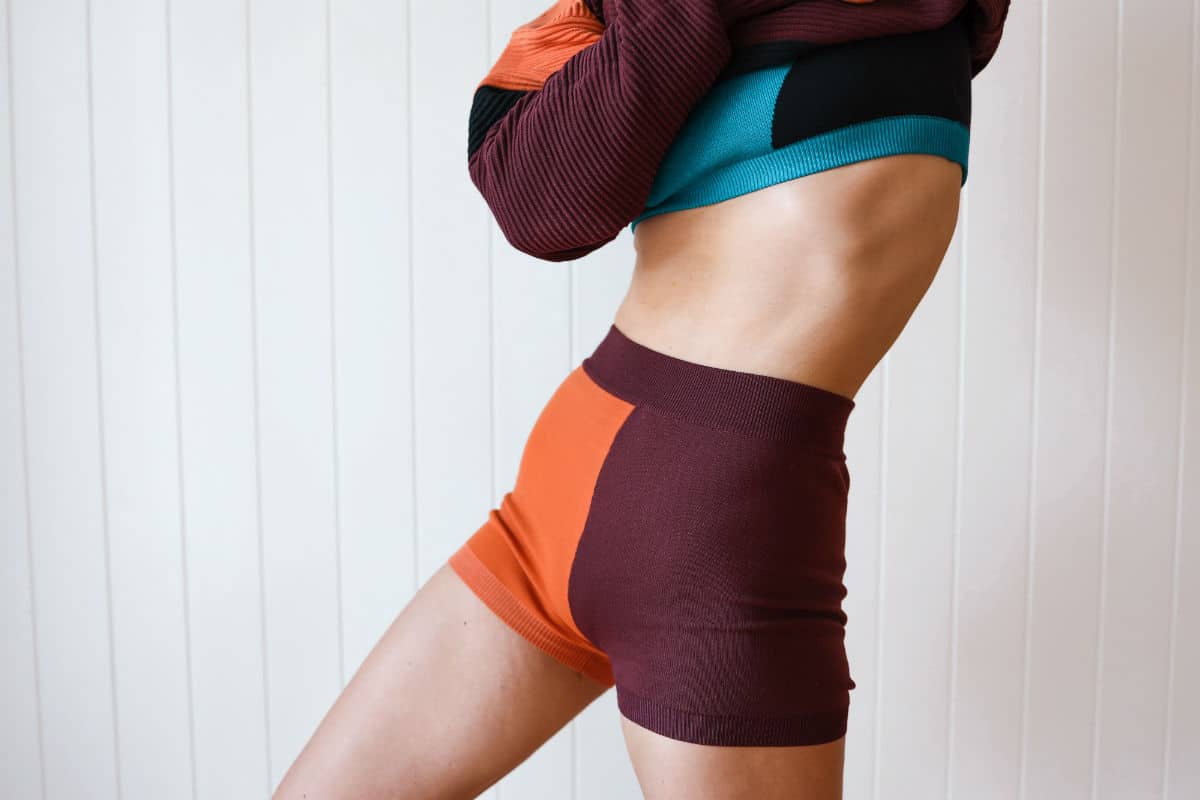
Finding a home workout schedule that you can actually stick too isn't easy. Finding the time amidst busy weekends and busier wfh-days is a challenge to put it lightly. But it is important to move, even if you can only find 10 or 15 minutes.
We first spoke to Amy Carmody from Amy Carmody Yoga at the beginning of the coronavirus pandemic for advice on working from home stretches to get the kinks out of our necks. Now, she's sharing her best home workouts you can do even when you only have 10 minutes.
When we first spoke back in April about the ergonomic conditions of working from home, I prompted people to move in shorter bursts more often, rather than going through huge working weeks at the desk and only doing three hour-long workouts a week.
I encourage my students to have the following post-it notes on their screen; "Water" "Posture" and "MOVE".
I impart this message daily, because when we are in one position for too long, our connective tissue known as fascia, will literally get stuck in that position, that's why posture is so important. But movement is the actual solution.
Fascia needs lubrication, hydration and the ability to glide well so we don't get that "stagnant" or "tight" feeling in our body. So moving every 20 minutes will continue that desired gliding effect. We also need to consider what muscles atrophy when excessive sitting takes place; glutes, core & shoulders.
This week put Post-it notes up on your screen, hydrate frequently, sit with a more upright posture and move more often. And as for moving, try some of these quick moves for a short wfh workout. They're all from my 'Resets' and 'Movement Snacks' - classes that are less than 20 minutes long.
1. The Elevated Clam
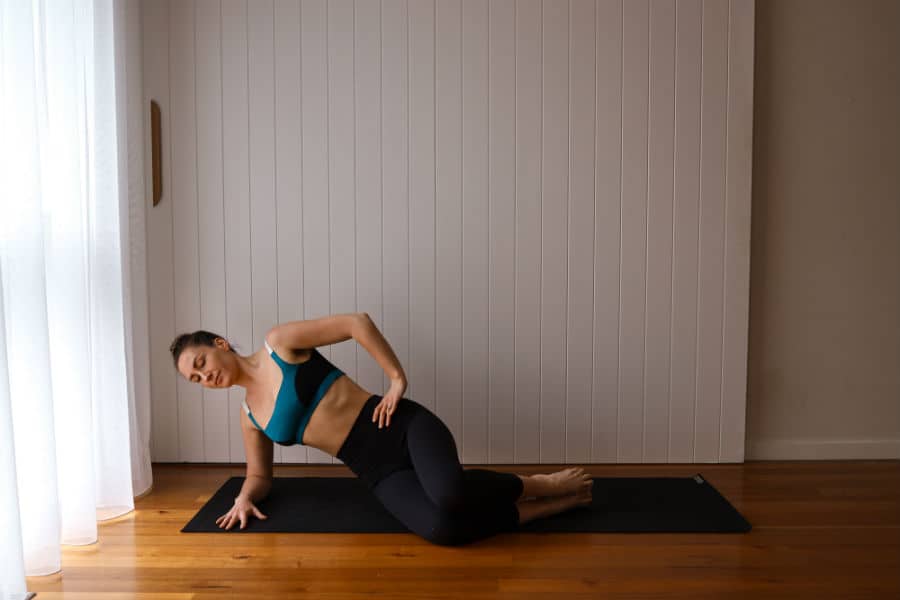
A new and improved version of the classic clam. Rather than only opening and closing the knees, lift the side of your pelvis off the ground every time the knees separate. The point of the clam is to target the lateral fibres of our glutes known as Gluteus Medius & Gluteus Minimus. These hip muscles are responsible for not only hip abduction and internal rotation, but they are bipedal muscles, which means our ancestors, the apes, didn't need them as they are quadrupedal creatures. So training these muscles are key to balancing on one leg and vital for hikers and runners for improving their gate stride.
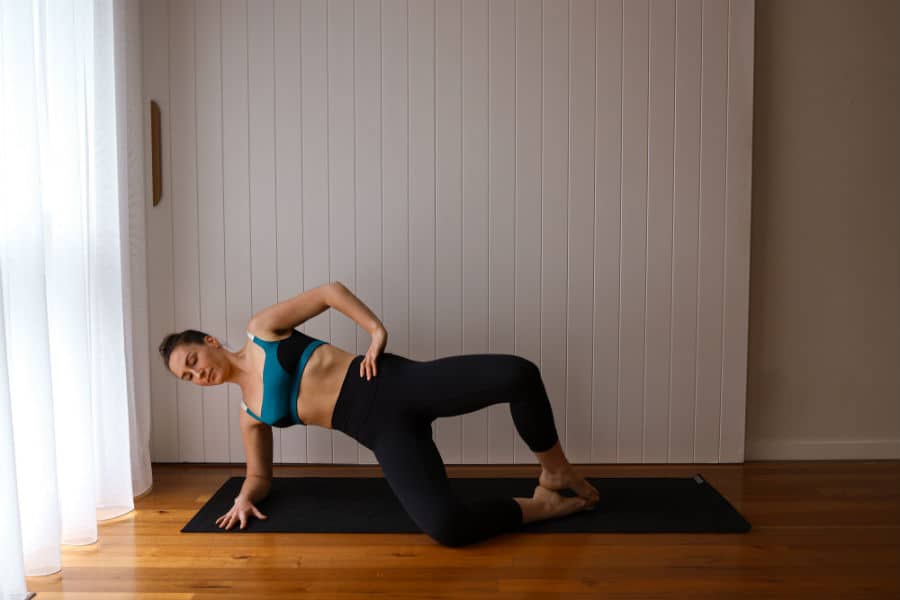
How to: Lay on your side, using one hand to support the side of your skull. Bring the knees out 90 degrees of the hips, and the feet inline with your knees. Keeping the feet together, move the top leg to open the knees apart, repeat until you feel your outer glutes, if the strength is there then try adding a lift off your pelvis every time the knees part.
2. Goddess Squat
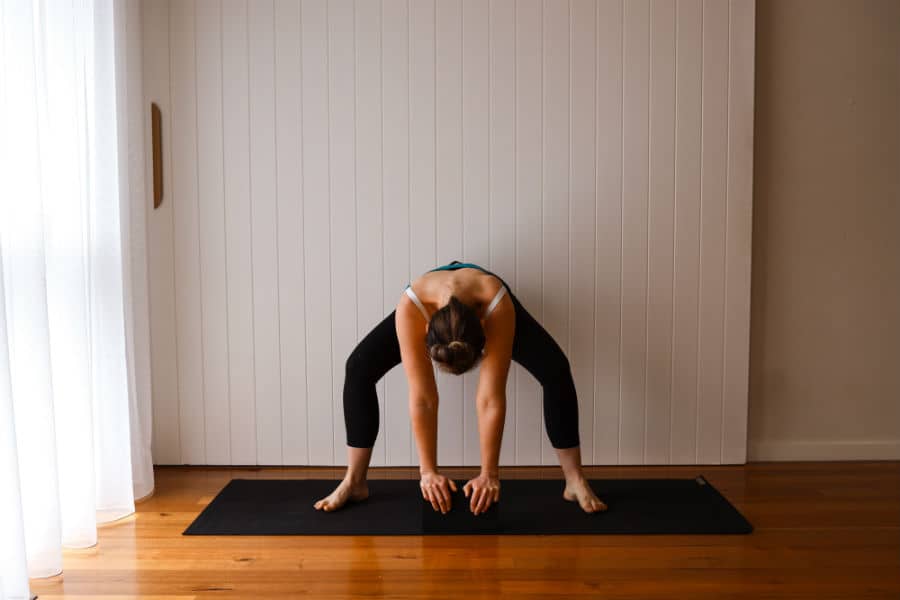
This pose is not only a big test in leg strength and endurance but due to the wide stance it will also relieve the inner leg muscles by putting the adductors under an active stretch. I try to be efficient with my clients, be they athletes, the desk workers, nurses or stay at home parents. I attempt to achieve both a 'stretch & strength' element in poses and the Goddess Squat is a great example of this.
How to: Take a stance slightly wider than shoulder width, turn your feet slightly outwards so your hips can externally rotate, bend the knees to initiate a high squat position, hinge from your hip joints to bring your torso more parallel to the floor, place the hands on a block or a chair, you can challenge your glutes by adding small pulses or choose a static hold and exhale from the mouth, releasing tension from the inner thighs and jaw.
Prenatal chooses a narrower stance to keep the groins stable.
3. Dolphin Pose

Not only is this one of the most effective and efficient poses you can do, it's also really tough. It's basically Downward Facing Dog pose on steroids. By standing on the forearms rather than the hands, it puts more demand on the proximal joints (the joints closer to the trunk). The pose not only lengthens the connective tissue in the back of the body, it puts serious load on the shoulders. We lack strength in the muscles surrounding the shoulder blades, because we don't weight-bare on our hands enough throughout our day. Subsequently, we lose that neurological connection to really important postural muscles that stop us from hunching over!
How to: Begin on all fours, lower to your forearms with the palms together, fingers interlaced and elbows shoulder width. Draw the chin to the throat, look back at your feet throughout, tucking the toes under, lift off your knees and begin to walk your feet toward your face. Allow the knees to stay bent and heels to hover to ensure you're staying as straight in your spine as possible. Push the ground with your forearms, thinking "shoulders up toward your ears", lift the front ribs and belly away from the ground. Hold for 1o breaths, pedaling the feet or shifting the pelvis from side to side to unstick any tightness.
4. The Sassy Roll
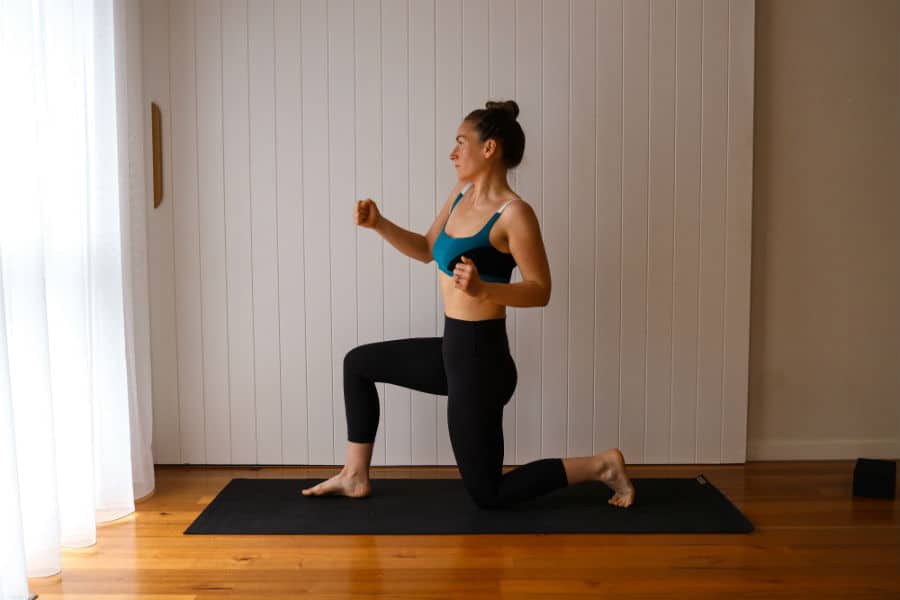
This is an ACY favourite, in fact there's even been a meme made for this move! It's so simple and something you can do anywhere anytime. You'll find you naturally do this in some way or another throughout the day, we've just formalised it and celebrate this move in most classes.
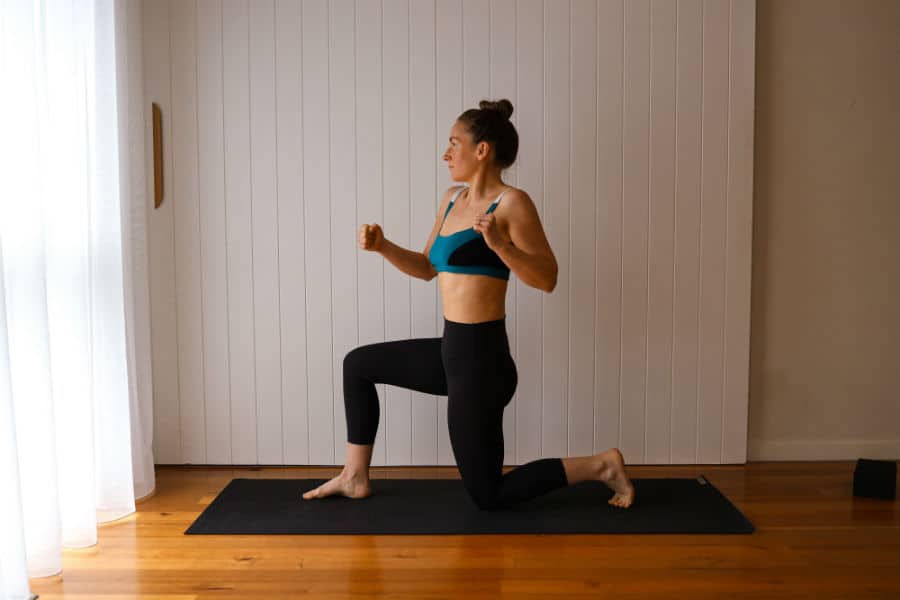
How to: Come into a 90/90 low lunge position. Squeeze the back glute strongly so you can feel a stretch at the front of your hip joint. Keep the lower belly draw back and front ribs down, skull on top of your pelvis. Let the arms hang by your side, then with a soft bend to the elbows simply roll your shoulders in circles in a backward motion. This will lubricate the joints that have probably been in the same position all day, getting all the fascia around your thoracic spine moving.
5. The Lemon Squeezer
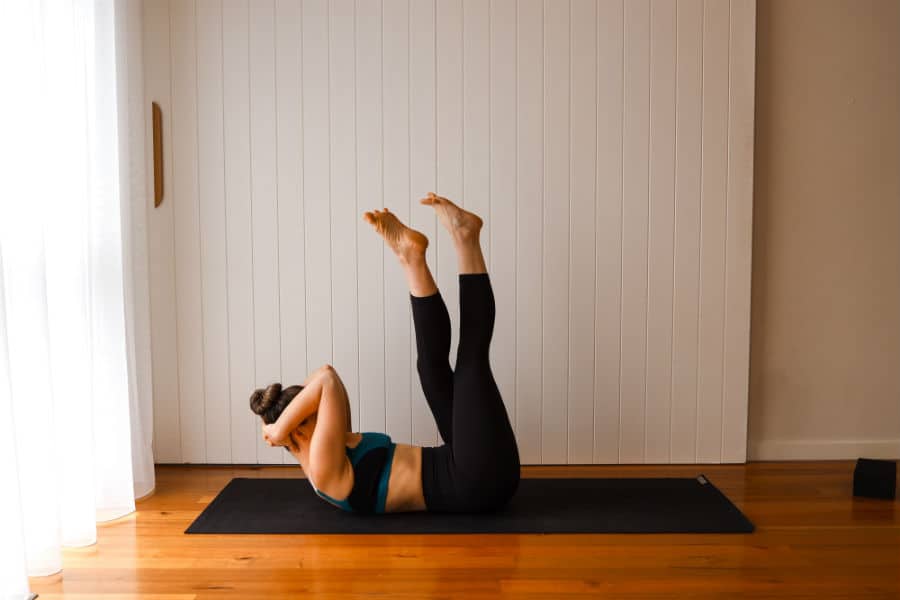
Everyone needs to be doing more core work. It is so essential that our core can do it's basic requirement: stabilise. Our core isn't simply a six pack, it's a dynamic group of proximal muscles that are responsible for keeping us upright, to protect the spinal column and to allow a varied choice to our movement. There are too many people suffering lower back pain, it's generally a combination of atrophied glute muscles, the intrinsic core lacking stability and a loss of mobility in the tissues surrounding our joints.
How to: lay on your back, feet under the knees, interlace all 10 fingers behind the skull and bring the elbows as close together as possible. Take the feet & legs toward the ceiling, a bend to the knees is fine. Keep the tailbone on the ground, inhale, then exhale keeping the elbows close, lift your head & shoulders off the floor. Keeping the legs long, cross the left leg in front of the right, imagine there was a lemon between your upper thighs, staying off your shoulders "squeeze all the juice from the lemon" uncross the legs, inhale lower head back down. Repeat, now crossing the right leg in front. If possible, repeat 10-15 times.
Amy Carmody Yoga - Resets
Since launching my platform I have a category called 'Resets'. These are short classes less than 15 minutes, and specifically designed to target glutes, core & shoulders. I learnt this method from LYT training, a method of yoga designed by a physical therapist. I want my students to schedule these movements throughout their day. It is about prioritising the necessary, and being as efficient as possible in the least amount of time.
This demand for better movement (and more of it), was not only coming from me, but my members were actually craving it too.
So I listened, and days later I launched a category called 'Movement Snacks'. All classes are under 20 minutes - it removed the guilt of attempting then failing to exercise. Most people have 20 minutes in their day, and fitting in a full class in that time is highly motivating. These 'Movement Snack' classes vary in focus, with students having a choice of classes from a list of different anatomical points of the body such as: "The Neck", "The Core" "The Hips" and even "Ankles Feet & Toes" and more.
You can access these short workouts and other classes at Amy Carmody Yoga.



